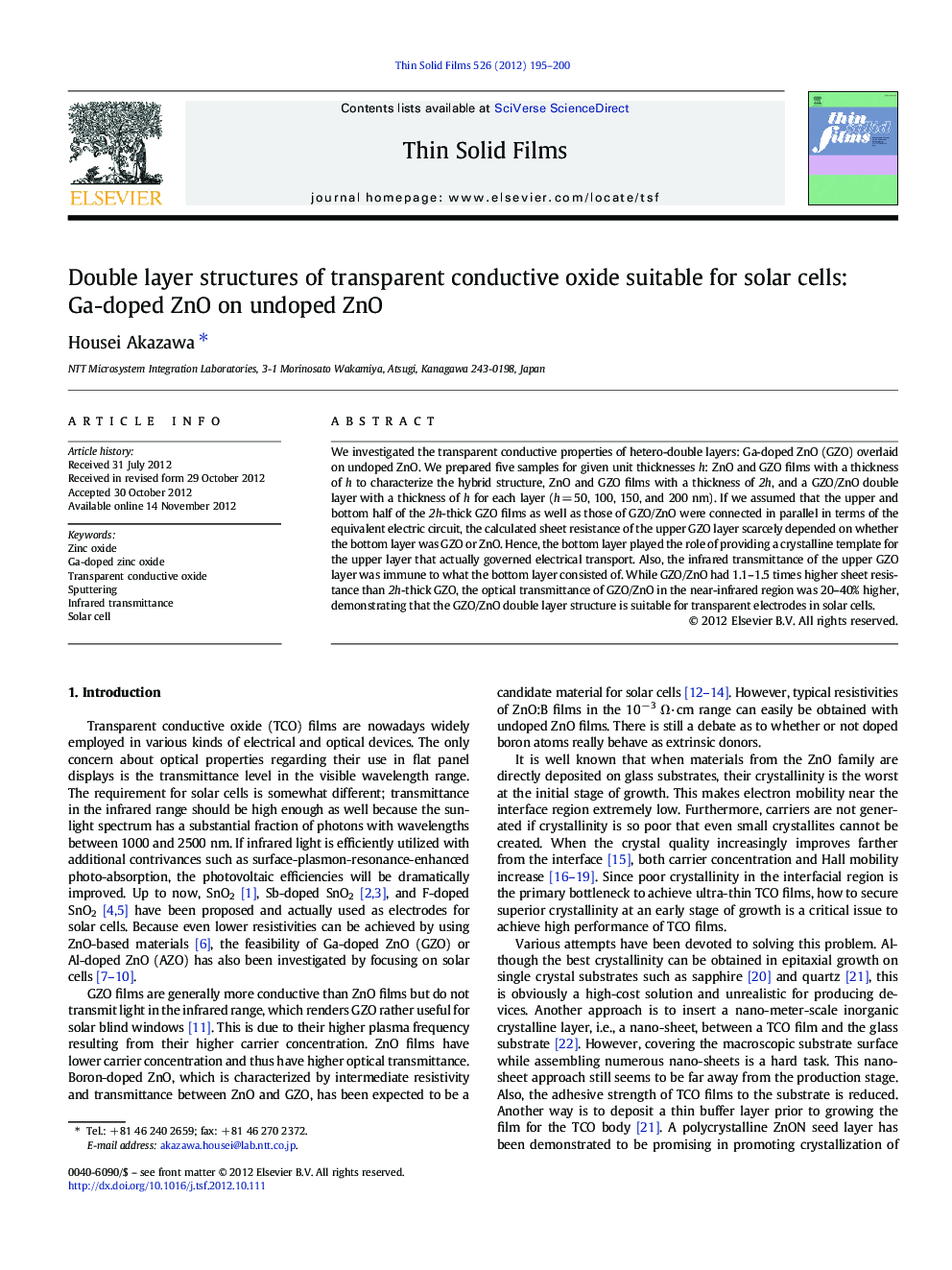| Article ID | Journal | Published Year | Pages | File Type |
|---|---|---|---|---|
| 1666465 | Thin Solid Films | 2012 | 6 Pages |
We investigated the transparent conductive properties of hetero-double layers: Ga-doped ZnO (GZO) overlaid on undoped ZnO. We prepared five samples for given unit thicknesses h: ZnO and GZO films with a thickness of h to characterize the hybrid structure, ZnO and GZO films with a thickness of 2h, and a GZO/ZnO double layer with a thickness of h for each layer (h = 50, 100, 150, and 200 nm). If we assumed that the upper and bottom half of the 2h-thick GZO films as well as those of GZO/ZnO were connected in parallel in terms of the equivalent electric circuit, the calculated sheet resistance of the upper GZO layer scarcely depended on whether the bottom layer was GZO or ZnO. Hence, the bottom layer played the role of providing a crystalline template for the upper layer that actually governed electrical transport. Also, the infrared transmittance of the upper GZO layer was immune to what the bottom layer consisted of. While GZO/ZnO had 1.1–1.5 times higher sheet resistance than 2h-thick GZO, the optical transmittance of GZO/ZnO in the near-infrared region was 20–40% higher, demonstrating that the GZO/ZnO double layer structure is suitable for transparent electrodes in solar cells.
► Ga-doped ZnO (GZO) on undoped ZnO is a transparent electrode fitted for solar cells. ► Electric conduction in GZO/ZnO primarily relies on the GZO upper layer. ► Using GZO/ZnO instead of GZO improves infrared transmittance by 20–40%.
